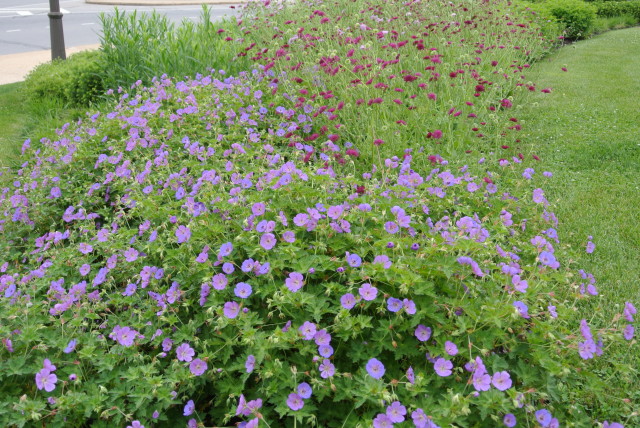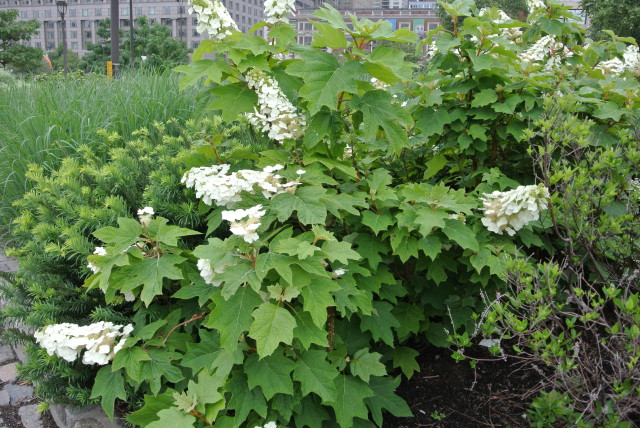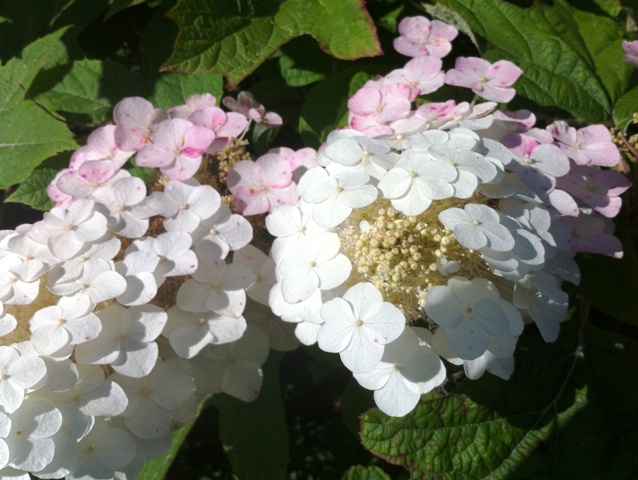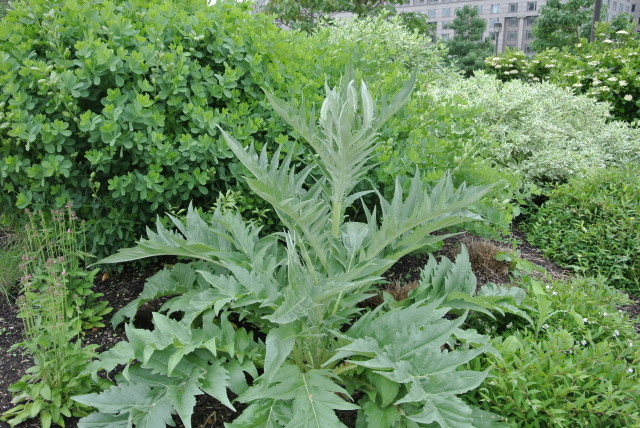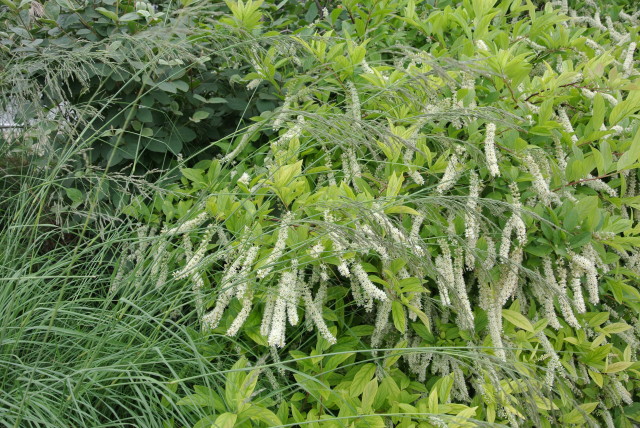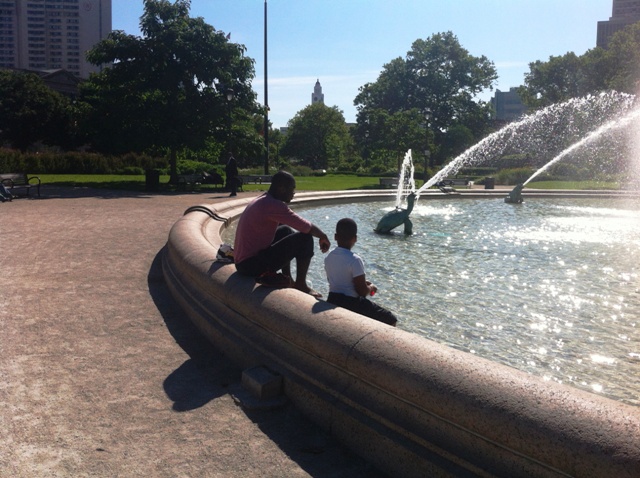The crown jewel of Philadelphia is the Benjamin Franklin Parkway – flanked on one side by the Philadelphia Museum Art with a straight view of Philadelphia City Hall several blocks away.
In the center of Philadelphia’s magnificent mile is Logan Circle, an open-space park, one of the five original planned squares laid out on the city grid. It was designed by Jacques Greber, a French landscape architect who transformed it into a circle similar to the oval of the Place de la Concorde in Paris. Both Philadelphia’s Free Library and Family Court Building, situated on the parkway, are modeled after the twin building of the Hotel de Crillon in Paris.
Logan Circle has gone through several transformations. With this latest one, the Fairmount Park Commission has done a fantastic job of creating an outstanding urban circle design and plantings – filled with masses of perennials and well thought out vignettes.
Below are some photos of plants at Logan Circle that I love and have used in my garden making throughout the years.
Hydrangea quercifolia, commonly known as Oak Leaf hydrangea, is a dramatic, native shrub with four seasons of interest. It can grow anywhere from 5-9 feet in height and width, it’s hardy in Zones 5-9, thrives in full sun to partial shade, and is a low maintenance plant. I love using it in groupings near a woodland setting. Like all hydrangeas, it thrives in rich, moist soil and is fantastic as a cut flower.
The first time I was exposed to Cynara cardunculus was when I worked at what was then Sir John Thouron’s garden, Doe Run, in The Brandywine Valley. Jock Christie, the head gardener, used it in the massive undulating herbaceous borders. It’s a superb architectural plant that is best used solo.
Itea virginica, commonly known as Virginia sweetspire, is one of my all time favorite shrubs. The showy white tasseled spring blooming flowers with a sweet scent adorn the shrub presently. But that’s only one of several reasons why it’s worthwhile to grow. It is native, low maintenance, versatile and can adapt to almost any location. Although listed as a partial shade to full sun shrub needing moist to medium soil, it can handle full shade and erosion. Its brilliant fall colors are breathtaking and remain intact long after other fall deciduous shrubs have lost their leaves.
One caveat with Itea virginica is that it can spread and form colonies due to its root suckering if you’re not vigilant about keeping it under control.
For anyone who happens to land in Philadelphia, the trek from wherever you’re staying over to Logan Circle, on towards the Philadelphia Art Museum – with stops at both the Rodin and Barnes Museum and a walk over to Boat House Row is a must!
If you haven’t fallen in love with Philadelphia prior to Logan Circle and its surroundings, you certainly will once you’ve experienced its grandeur and beauty.

